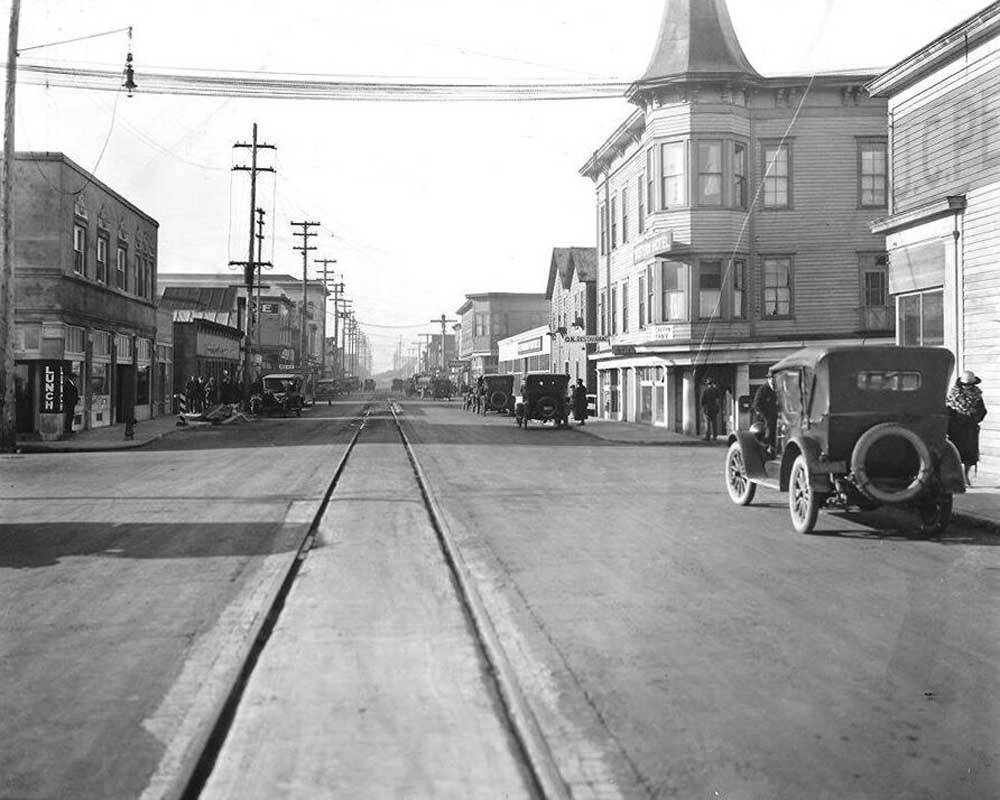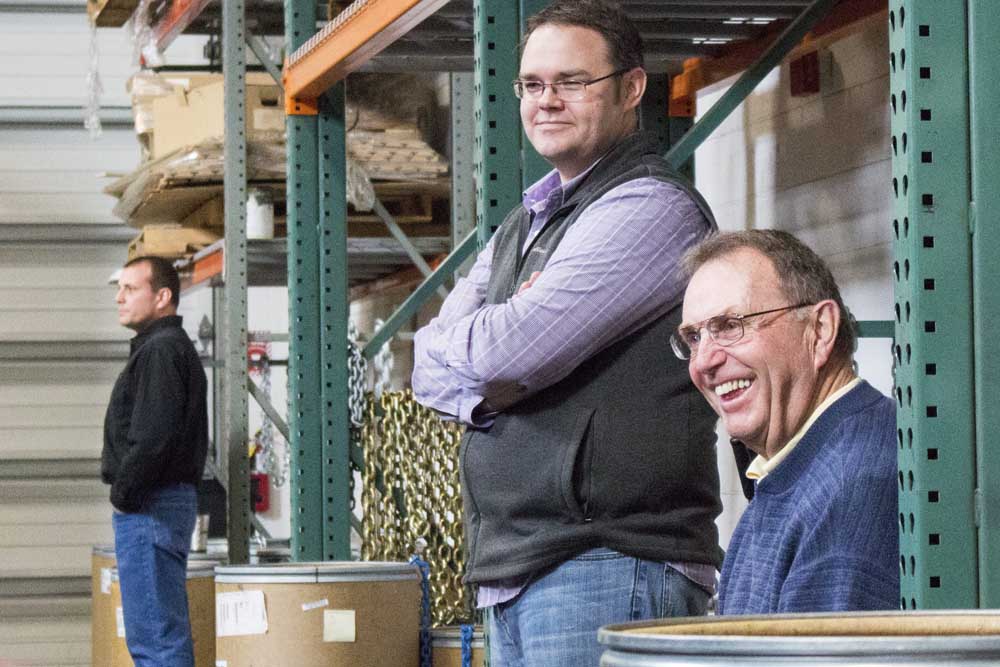Out of the ashes: Chinatown and a city center
Published 1:00 pm Friday, November 24, 2023

- This historic photo shows the intersection of Ninth and Astor streets in the mid-1920s.
Many of Astoria’s streetscapes evoke the past. Hold up an old photo or postcard and one can compare and easily identify similarities.
Trending
Waiting in traffic at the corner of Ninth and Bond streets — or present-day Marine Drive — might not stir the same sorts of curiosities as more recognizable historical street corners, but certain details may bring about questions as to how and why this part of the city looks the way it does — the awkward angle of the highway that pulls traffic west toward the Astoria Bridge and the mixture of buildings from multiple decades.
A century ago or longer, the intersection would be unrecognizable as the corner is seen today. Back then, it was the center point of much of the city’s activities.
To the immediate south stood the city’s post office and county courthouse. East, at 10th and Bond streets, was the site of Astoria’s first bank, owned by Capt. George Flavel, which stood on the same block as the Chamber of Commerce.
Trending
Extending west toward Sixth Street, Bond Street was lined with several Chinese mercantile and residential structures in an area that Astoria claimed as Chinatown. North of Ninth and Bond streets, toward the river, was the city’s red light district, which Astorians aptly named Swilltown.
At Ninth and Bond streets, comings and goings were constant and frequently reported in the city’s newspaper, The Morning Astorian:
From Aug. 23, 1896: “After the races yesterday afternoon, Daggett, the balloonist, made an ascension from the corner of Ninth and Bond streets, in the presence of an immense crowd of people … Just as he took his position on the trapeze bar, it is reported he was warned that one or two of the ropes attached to the parachute were almost worn through … With the rapidity of lightning, the unfortunate aeronaut dropped to earth. The crowd rushed to the scene, only to find the man in a crushed condition just to the rear of Mr. Duffy’s residence on the hill. His collarbone and left ankle were both broken and he was soon conveyed to St. Mary’s Hospital … The latest reports from the hospital last night were that he was doing well and would probably recover.”
Sept. 25, 1903: “The county officials agree that much of the youthful vice is due primarily to the merry-go-round that is brought here every year. Justice Goodman branded the corner of Ninth and Bond streets, where the merry-go-round holds forth, as a veritable hellhole of vice.”
Sept. 3, 1907: “Hogs of all kinds, chickens, sheep and horses may be seen at this show which will open at the corner of Ninth and Bond this morning.”
March 3, 1907: “Ninth and Bond Streets, Astoria, Oregon: The stock and premises now in possession of the Shafer-Whittier Co., to be sold at such prices as is deemed necessity to close out the entire stock of men’s, boys’, women’s and girls’ wearing apparel. Fixtures for sale. Nothing reserved from the floor to the ceiling.”
By the 1920s, the vibrancy within blocks surrounding Ninth and Bond streets was beginning to fade.
Shifts in cannery labor needs along with discriminatory immigration acts dispersed much of Astoria’s Chinese population and Prohibition laws forced businesses in Swilltown to either leave or go underground.
When the Great Astoria Fire of 1922 destroyed the majority of Astoria’s business district, the blocks northwest of Ninth and Bond had been spared largely due to the Spexarth Building on Eighth and Commercial streets acting as a firewall, but also because the streets nearest to the waterfront were closest to the pump showering water toward the burning city.
Desperate merchants and other professionals, suddenly without real estate, swarmed the old Swilltown to claim space along Eighth and Ninth between Bond and Astor streets.
Storefronts, which once operated as saloons and brothels, suddenly filled with department stores like Bee Hive and J.C. Penney, furniture stores, hardware stores, jewelry stores, barbershops, dentists, photography studios, plumbers and restaurants.
Areas that had historically been avoided by families became bustling with Christmas shoppers, seemingly overnight.
Amid the chaos during and after the fire, The Morning Astorian never stopped reporting the news. The local Finnish newspaper, Toveri, helped out by temporarily printing issues while equipment that had been swiftly hauled out of the Astorian’s previous building during the night of the fire was moved to a temporary space.
Determined by his own rebuild slogan of “Let’s Go,” Morning Astorian owner John S. Dellinger immediately made plans for a brand new building to be constructed at the corner of Ninth and Bond streets.
The concrete building was among the first new structures built after the fire. Designed by Astorian architect Charles T. Diamond, the project came together fast during the first few months of 1923, and by April reporters were already getting to work setting up their offices.
The Morning Astorian’s previous building, owned by Werner Fellman on Duane Street at the center of 15th and 16th streets, was rehabilitated and leased to Nyquist Motor Co. It still stands today, and most recently operated as a furniture store.
In 1930, the same year Dellinger died, The Morning Astorian merged with the Astoria Evening Budget and moved out of its Ninth and Bond location. A little over 10 years later, a project constructing U.S. Highway 30 involved the demolition of the last remaining structures associated with the Chinese quarter of the Astor-Bond street area.
A headline from the Evening Astorian-Budget on Aug. 9, 1941, read: “Highway Job Destroys Last Remains of Once-Populous Astoria Chinatown.”
“Modern progress in the shape of the Astor-Bond street highway rerouting job is crunching through the last remnants of one of the most colorful portions of the Astoria of an earlier day — old Chinatown,” the article read.
For the last 100 years, the 1923 Morning Astorian building has watched over the Ninth and Bond corner. Though the types of comings and goings changed, Astoria continued to progress around it. Midcentury modern buildings erupted out of the ground nearby. Waterfront buildings adapted into hotels and restaurants.
Phog Bounders Antique Mall, a treasure trove of historic artifacts, now calls the Morning Astorian building home, honoring the city’s history and inviting curiosity to ponder the past.









